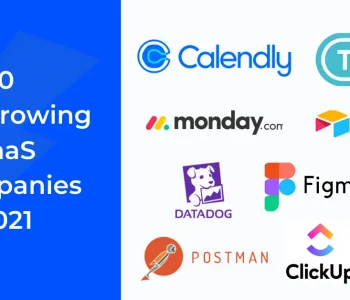 Emailing
Emailing
At the brink of the New Year, B2B marketing and sales professionals wonder what shifts will take place in key trends, and specifically, concerning email marketing, whether it will be still relevant in the coming year.
According to stats, email is a preferred business communication channel for over 86% of professionals and has an ROI of 4400%. In other words, it’s not going anywhere in 2019 and will still be one of the most important marketing channels despite the growing popularity (and number) of social networks.
That said, one more issue is yet not clear – is it worthwhile to use email for cold outreach? Taken the generally accepted stereotype that “cold emails are dead”, you can be tempted to kick the idea aside at once. But… why don’t you give us a chance to show you the reverse side of the medal?
“Cold” emailing IS dead
The generic spammy emails sent to contacts from non-targeted purchased databases, template-like, irrelevant and providing zero value will lead you nowhere, and they never could. This much is clear – such cold outreach is a dead end.
Ok, but “cold outreach” means contacting people who didn’t opt in and may be unaware of your existence. So, how do you make a complete stranger with an overcrowded inbox open and what’s more – respond or click a button in your specific “cold” email? Let’s see what we can do.
How to Do Cold Emails Right
1. Get a well-targeted list of contacts
The list should be made up of businesses which correspond to your ideal customer profile and might be interested in your offer. The more info about a contact you can find, the better, with the essential fields being name, company, position, location, industry etc. You can either find the contact details by yourself or outsource the task (we can handle similar tasks here at LeadWave)
2. “Warm up” your contacts

Thanks to technological advances, you can present your business in front of your target audience even before you reach out. For example, LinkedIn and Facebook offer advertising functionality to display ads to a specific list of users based on their emails. So, you simply upload your list and start building brand awareness among your target contacts.
This increases your chances for a higher open and response rate, as people will be more likely to click on your emails if your company sounds familiar.
3. Create a compelling copy and subject
There’s so much said on the topic that we’re going to share only a couple of tips we find really useful.
Your subject line is key, so come up with multiple variants focusing on creativity and going further than simply using the contact’s name in it for the sake of personalization. Test it to find the best performing variants.
Tip. Use tools like SubjectLine to test the effectiveness of your subject line before hitting Send.
Your copy (which will be seen only if your subject line is really compelling) should be highly personalized, concise, sincere and creative. You need to spark interest in your contact, and stand out among hundreds of sales emails, remember?
Here are a few ideas for inspiration:
– some marketers use images with prospect’s company logo on their T-shirts to catch attention
– some companies use videos showing personalized product demo for the prospect’s company/website
– many companies, especially IT and tech, use humor to sound more “human” in their cold emails
– there are examples of using direct mail to support cold emails, which doubles open rates
– some companies go as far as sending gifts to their contacts to catch attention.
All of these techniques require considerable investments – both time and finances, but they seriously improve your chances to increase your cold outreach ROI.
There are also certain cold emailing don’ts:

1) don’t try to sell in your first email (focus on building a relationship instead)
2) don’t follow the traditional cold outreach-style templat
3) don’t focus on your company/product and its “fabulous” feature
4) don’t lie (if you’re referring to a contact’s recent post/interview/book etc. for the sake of personalization, take the time to really familiarize yourself with that content)
5) don’t forget to follow up (and don’t expect a flood of interested prospects right after your first email, so do work out a set of emails to improve your chances to get your contact’s attention)
6) don’t go for a too fancy design, or your emails risk losing the personal feel of regular emails.
7) don’t confuse your contacts with a few CTAs or go without one at all – it should be crystal clear for them what you ask them to do next.
4. Run and track your cold outreach campaign

A great thing about cold emails vs. cold calling is that you can reach hundreds of contacts at once, without the need to hire more staff. Still, putting together a campaign like this (truly result-oriented) takes much more time and efforts than it seems.
Use email outreach tools to cut down on the amount of menial tasks (e.g. automatedly personalizing all emails) and effectively track the campaign performance. The viable options are as follows:
– Autopilot
– Outreach
– Woodpecker
– Lemlist
– Reply.io
– Mailshake
Bottom line

Cold outreach isn’t a magic pill or a waste of time by default. Its success depends on how well you prepare. It is one of the touchpoints helping to attract potential customers and inform them about your existence. If it sounds interesting, you can try, risking only your time and energy, but with a great outcome in mind.
LeadWave can help you make the first step with cold outreach – find a relevant list of contacts and enrich it with the necessary details, depending on the level of personalisation you plan on. Get your unique sample list for free right now!








